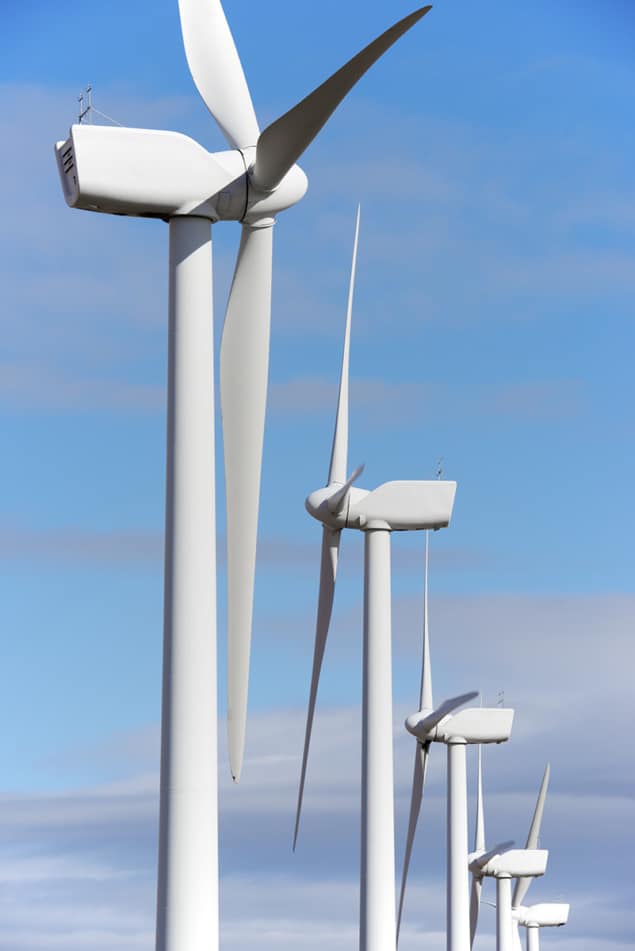
How will climate change affect wind and solar power? By 2050 wind power is likely to fall across the central US and increase in the east. Meanwhile, solar power looks set to decline in California but increase across the southeast US. A new study investigates how Texas, currently the US state with greatest installed wind and solar capacity, will cope as climate change kicks in.
Michael Craig from the US National Renewable Energy Laboratory (NREL) and colleagues used five global climate models to investigate the change in potential wind and solar energy for the state of Texas by 2050 under RCP8.5 – the most severe climate change scenario. The researchers used these figures in a unit commitment and economic dispatch model (UCED) to assess how the changes will affect power system operations.
By 2050 the extra energy in the atmosphere is likely to boost wind-speeds across Texas, according to the team’s climate model simulations, bringing a rise in wind power generation potential of between 1 and 4%.
The results for solar power were not so clear, with a possible increase or decrease in solar generation potential of up to 1%. There were lots of regional, seasonal and daily variations in both forms of renewable power.
“The spatial and temporal differences in our results highlight the importance of using high-resolution data sets to study the potential impacts of climate change on wind and solar power,” says Craig, whose findings are published in Environmental Research Letters (ERL).
Craig and his colleagues also showed that the impacts of climate change on wind and solar power are likely to have a knock-on effect on other generation technologies. This will alter electricity generation costs and carbon dioxide emissions. In the specific scenario they explored, the increased wind and solar generation could reduce carbon dioxide emissions by between 8 and 16 million tons, with electricity up to 1% cheaper. “These particular results are very dependent on the modelling assumptions,” says NREL’s Carlo Brancucci.
The researchers stress that their calculations are not forecasts. “Significant uncertainty surrounds many of our results, from the emissions and forcing pathways the world actually follows to the impacts of that pathway across space and time.” What’s more the calculations don’t take into account future changes in energy demand, population change or improved energy efficiency.
Nonetheless, the scientists believe that their research demonstrates the need to understand how climate change may affect power generation. Ultimately, calculations like these could feed into policy decisions such as power system planning and optimal placement of wind and solar farms.



